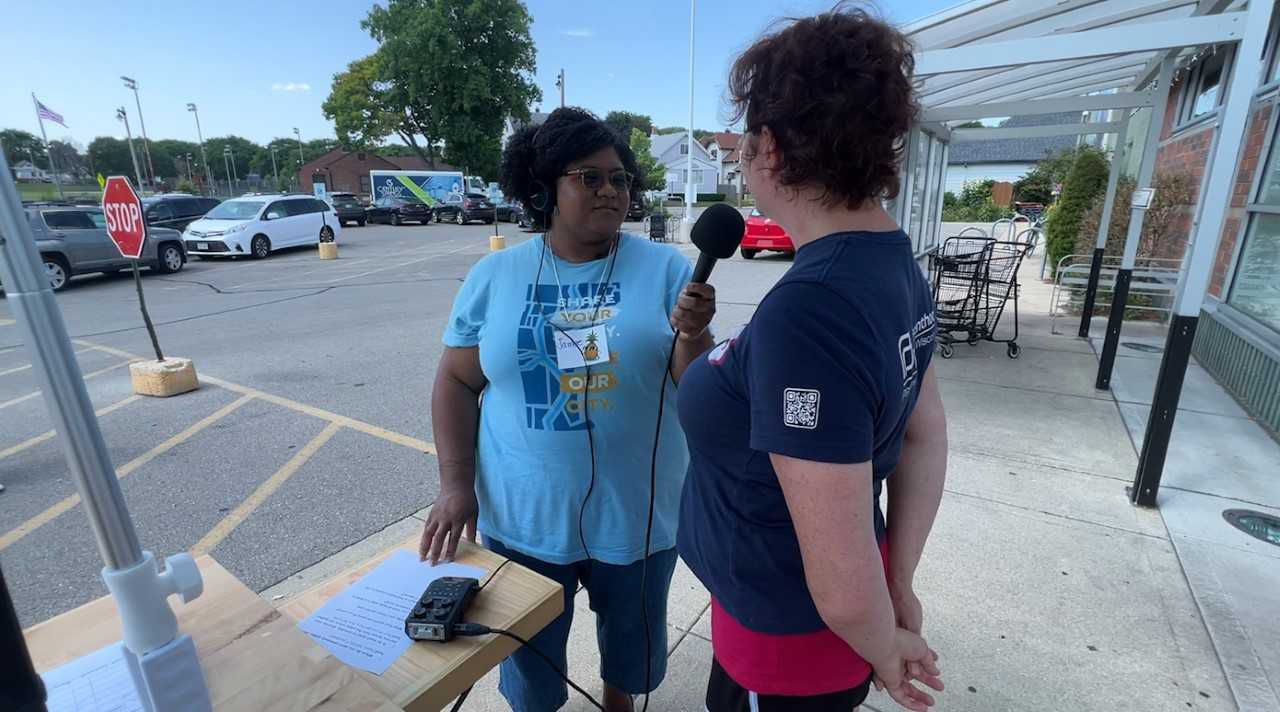MILWAUKEE — On the University of Wisconsin-Milwaukee campus, you’ll find the Center for 21st Century Studies. The center’s work is focused on the times we’re living in right now. The goal of it is to build a community of experts to address some of today’s most pressing issues.
One of the center’s most dynamic projects is referred to as Story Cart. It’s described as a story experience program.
What You Need To Know
- The Story Cart program works by going to various locations throughout the community, setting up a physical “story cart” with audio recording equipment, and simply starting conversations with strangers on a specific topic
- UWM Story Cart goes around Milwaukee County
- Pritchard said this kind of in-person interaction gets better results than simply sending out a questionnaire for a person to fill out
- Pritchard said this project is allowing people to have a voice and be agents of their own history
The program works by going to various locations throughout the community, setting up a physical “story cart” with audio recording equipment, and simply starting conversations with strangers on a specific topic.
This year’s story cart focus is on how food and land connect us as humans.
Jamee Pritchard said she is enjoying being a part of this year’s project. She’s a librarian and PhD student at UWM.
“This allows you to understand how people are living life,” said Pritchard, standing outside a grocery store in Milwaukee with the story cart. “We aren’t just analyzing or relying on official documents in the archive. We’re out in the community.”

Pritchard said this kind of in-person interaction gets better results than simply sending out a questionnaire for a person to fill out.
Nicole Welk-Joerger is the deputy director of the story cart program. She said it was created on the premise that people’s daily patterns and practices say a lot about current times and societal issues.
“Specifically, for this project, we’re able to hear people’s stories related to food, like how and where they get their food, what they buy, how they get to the store, food bank or farmers market,” said Welk-Joerger.
Those personal stories then uncover patterns and challenges, and can hopefully prompt positive change.
“Through this kind of interactive research and personal story gathering, we can try to then understand how the government can better help people with food access, or how grocery stores and food banks can better help or work more efficiently,” said Pritchard.
The story cart team compiles and reviews all the individual conversations, then weaves them together into a fuller story about food, land and human connection. Local artists will also create art based on the stories, answers and anecdotes shared by each person who stopped to chat.
“I think we are creating documentation that allows people to have a voice, and to be agents of their own history,” said Pritchard.



